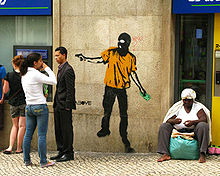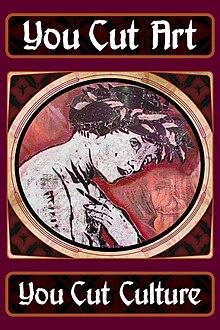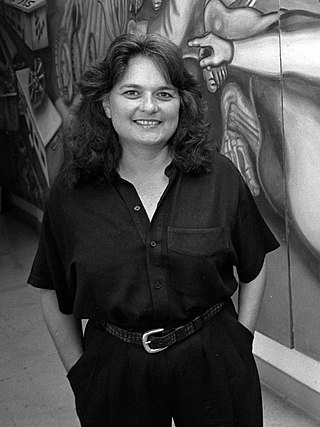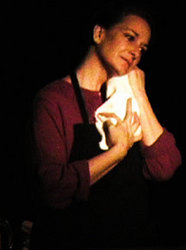
Artivism is a portmanteau word combining art and activism, and is sometimes also referred to as Social Artivism.

Artivism is a portmanteau word combining art and activism, and is sometimes also referred to as Social Artivism.



The term artivism in US English has its roots in a 1997 gathering of Chicano artists from East Los Angeles and the Zapatistas in Chiapas, Mexico. The words "Artivist" and "Artivism" were then popularized through a variety of events, actions and artworks via artists and musicians such as Quetzal, Ozomatli, and Mujeres de Maiz, among other East Los Angeles artists, and at spaces such as Self Help Graphics & Art.[ citation needed ]
Artivism further developed as antiwar and anti-globalization protests emerged and proliferated. In many cases artivists attempt to push political agendas by the means of art, but a focus on raising awareness of social, environmental, and technological problems is also common.[ citation needed ]
Besides using traditional mediums like film and music to raise awareness or push for change, an artivist can also be involved in culture jamming, subvertising, street art, spoken word, protesting, and activism. [1] [2] [3] Since 2013, Cromoactivismo, a Brazilian group of women artists, works with collectives, groups and schools in direct actions using color for social change. [4] [5]
Artivist Eve Ensler stated:
... This passion has all the ingredients of activism, but is charged with the wild creations of art. Artivism—where edges are pushed, imagination is freed, and a new language emerges altogether." Bruce Lyons has written: "... artivism ... promotes the essential understanding that ... [humans] ... can, through courageous creative expression, experience the unifying power of love when courage harnesses itself to the task of art + social responsibility. [1] [2] [3]
By 2005, the term had made its way into academic writing when Slovenian theatre scholar Aldo Milohnic used the term to discuss "autonomous ('alter-globalist', social) movements in Slovenia that attracted wide attention. In carrying out their political activity they made use of protests and direct actions, thereby introducing the 'aesthetic', willingly or not". [6] In 2008, Chela Sandoval and Guisela Latorre published a piece on Chicano/a artivism and M. K. Asante using the term in reference to Black artists. [7] [8]
There is a chapter on artivism in the book It's Bigger Than Hip Hop by M. K. Asante. Asante writes of the artivist:
The artivist (artist + activist) uses their artistic talents to fight and struggle against injustice and oppression—by any medium necessary. The artivist merges commitment to freedom and justice with the pen, the lens, the brush, the voice, the body, and the imagination. The artivist knows that to make an observation is to have an obligation.
The impact of artivism vs. conventional activism was tested in a public scientific experiment in Copenhagen, Denmark, in 2018. The results, reported in the journal of Social Movement Studies, suggest that artivism may be more effective than conventional activism. [9]
Notable artivists and self-identified artist-activists include:
Artivists often work in interdisciplinary collectives that are stand-alone' or operate as a creative part of the greater activist groups, such as Gran Fury of AIDS Coalition to Unleash Power (ACT UP).[ citation needed ] Other groups include:

The Great Wall of Los Angeles is a 1978 mural designed by Judith Baca and executed with the help of over 400 community youth and artists coordinated by the Social and Public Art Resource Center (SPARC). The mural, on the concrete sides of the Tujunga Wash in the San Fernando Valley was Baca's first mural and SPARC's first public art project. Under the official title of The History of California, it was listed on the National Register of Historic Places in 2017.

The Centro Cultural de la Raza is a non-profit organization with the specific mission to create, preserve, promote and educate about Chicano, Mexicano, Native American and Latino art and culture. It is located in Balboa Park in San Diego, California. The cultural center supports and encourages the creative expression “of the indigenous cultures of the Americas.” It is currently a member of the American Alliance of Museums.

Chicana feminism is a sociopolitical movement, theory, and praxis that scrutinizes the historical, cultural, spiritual, educational, and economic intersections impacting Chicanas and the Chicana/o community in the United States. Chicana feminism empowers women to challenge institutionalized social norms and regards anyone a feminist who fights for the end of women's oppression in the community.

Judith Francisca Baca is an American artist, activist, and professor of Chicano studies, world arts, and cultures based at the University of California, Los Angeles. She is the co-founder and artistic director of the Social and Public Art Resource Center (SPARC) in Venice, California. Baca is the director of the mural project that created the Great Wall of Los Angeles, which was the largest known communal mural project in the world as of 2018.

A Single Woman is a play based on the life of Jeannette Rankin, the first woman in the United States Congress. First drafted as a one-woman show by Nevada Shakespeare Company founding Artistic Director, Jeanmarie Simpson, it developed into a "duet performance work" by the time it premiered at the Oats Park Art Center in Fallon, Nevada on February 7, 2004.

Quetzal is a bilingual (Spanish-English) Chicano rock band from East Los Angeles, California.

Jeanmarie Simpson is an American theatre artist and peace activist best known for writing and playing the title role in the 2004 play A Single Woman, and its 2008 film adaptation, based on the life of first US Congresswoman, Jeannette Rankin.

Balmy Alley is a one-block-long alley that is home to the most concentrated collection of murals in the city of San Francisco. It is located in the south central portion of the Inner Mission District between 24th Street and Garfield Square. Since 1973, most buildings on the street have been decorated with a mural.

The Chicano Art Movement represents groundbreaking movements by Mexican-American artists to establish a unique artistic identity in the United States. Much of the art and the artists creating Chicano Art were heavily influenced by Chicano Movement which began in the 1960s.

Asco was an East Los Angeles based Chicano artist collective, active from 1972 to 1987. Asco adopted its name as a collective in 1973, making a direct reference to the word's significance in Spanish ("asco"), which is disgust or repulsion. Asco's work throughout 1970s and 1980s responded specifically to socioeconomic and political problems surrounding the Chicano community in the United States, as well the Vietnam War. Harry Gamboa Jr., Glugio "Gronk" Nicandro, Willie F. Herrón III and Patssi Valdez form the core members of the group.

Activism consists of efforts to promote, impede, direct or intervene in social, political, economic or environmental reform with the desire to make changes in society toward a perceived greater good. Forms of activism range from mandate building in a community, petitioning elected officials, running or contributing to a political campaign, preferential patronage of businesses, and demonstrative forms of activism like rallies, street marches, strikes, sit-ins, or hunger strikes.
Chela Sandoval, associate professor of Chicana Studies at University of California, Santa Barbara, is a noted theorist of postcolonial feminism and third world feminism. Beginning with her 1991 pioneering essay 'U.S. Third World Feminism: The Theory and Method of Oppositional Consciousness in the Postmodern World', Sandoval emerged as a significant voice for women of color and decolonial feminism.
Will St Leger is a street artist/artivist, Radio DJ and gay rights activist living in Dublin, Ireland.

Martha Gonzalez is a Chicana artist, activist, musician and feminist music theorist. She is an associate professor in the Intercollegiate Department of Chicana/o Latina/o Studies at Scripps College. She is also a lead singer, percussionist, and songwriter for the band Quetzal, which won a Grammy Award for Best Latin Pop, Rock or Album in 2013. In 2022, Gonzalez was named a MacArthur Fellow by the MacArthur Foundation.

Susan Kelk Cervantes is an American artist who has been at the epicenter of the San Francisco mural movement and the co-founder and executive director of the community-based non-profit, Precita Eyes Muralists.
La Memoria De Nuestra Tierra: California 1996 is a 10 ft x 30 ft rectangular mural, currently located in the University of Southern California's Graduate Student Lounge within the Ronald Tutor Campus Center. The mural was painted by artist Judy Baca in collaboration with students from the University's Roski School of Art and Design. This piece shows the Chicano history of Southern California through the depiction of various images inspired by the native history of the land and the more modern conflicts and issues Latinos have suffered.

Chicana art emerged as part of the Chicano Movement in the 1960s. It used art to express political and social resistance through different art mediums. Chicana artists explore and interrogate traditional Mexican-American values and embody feminist themes through different mediums such as murals, painting, and photography. The momentum created from the Chicano Movement spurred a Chicano Renaissance among Chicanas and Chicanos. Artists voiced their concerns about oppression and empowerment in all areas of race, gender, class, and sexuality. Chicana feminist artists and Anglo-feminist took a different approach in the way they collaborated and made their work during the 1970s. Chicana feminist artists utilized artistic collaborations and collectives that included men, while Anglo-feminist artists generally utilized women-only participants. Art has been used as a cultural reclamation process for Chicana and Chicano artists allowing them to be proud of their roots by combining art styles to illustrate their multi-cultured lives.

Caleb Duarte Piñon (ka-leb) is an American multidisciplinary artist who works with construction type materials, site-specific community performance, painting, and social sculpture and social practices.

Pinto or Pinta is a member of a Chicano subculture of people who are or have been incarcerated. It is an in-group moniker used to distinguish oneself from the general prison population or from "model inmates." It is a term which embraces the oppositional elements of being a Convicto. The term came from a bilingual play on the Spanish word for penitencia (penitence), since pintos and pintas are people who have spent time in penitentiaries. The term has also been traced to the Spanish word Pintao.
Angélica Becerra is an activist visual artist who primarily works in watercolor and digital media.